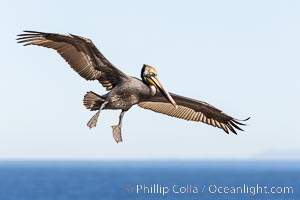
California Brown pelican parachuting down to land, wings outstretched, spreading wings wide to slow in anticipation of landing on seacliffs. Adult winter breeding plumage colors.
Species: Brown Pelican, Pelecanus occidentalis, Pelecanus occidentalis californicus
Location: La Jolla, California
Image ID: 38940
Species: Brown Pelican, Pelecanus occidentalis, Pelecanus occidentalis californicus
Location: La Jolla, California
Image ID: 38940
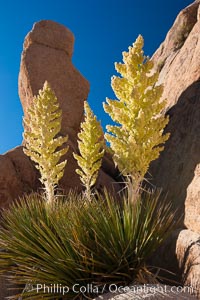
Parry's Nolina, or Giant Nolina, a flowering plant native to southern California and Arizona founds in deserts and mountains to 6200'. It can reach 6' in height with its flowering inflorescence reaching 12'.
Species: Parry's nolina, Nolina parryi
Location: Joshua Tree National Park, California
Image ID: 26736
Species: Parry's nolina, Nolina parryi
Location: Joshua Tree National Park, California
Image ID: 26736
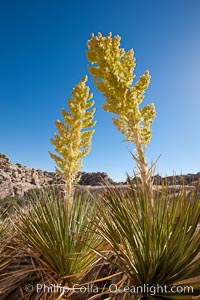
Parry's Nolina, or Giant Nolina, a flowering plant native to southern California and Arizona founds in deserts and mountains to 6200'. It can reach 6' in height with its flowering inflorescence reaching 12'.
Species: Parry's nolina, Nolina parryi
Location: Joshua Tree National Park, California
Image ID: 26746
Species: Parry's nolina, Nolina parryi
Location: Joshua Tree National Park, California
Image ID: 26746
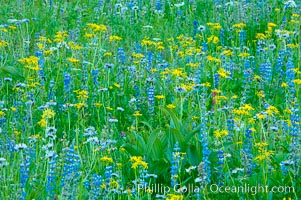
Paradise Park hosts a rich display of wildflowers each summer.
Location: Paradise Meadows, Mount Rainier National Park, Washington
Image ID: 13916
Location: Paradise Meadows, Mount Rainier National Park, Washington
Image ID: 13916
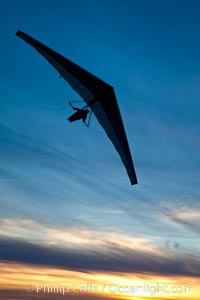
Hang Glider soaring at Torrey Pines Gliderport, sunset, flying over the Pacific Ocean.
Location: La Jolla, California
Image ID: 24290
Location: La Jolla, California
Image ID: 24290
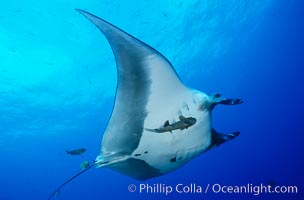
Pacific manta ray with remora.
Species: Giant manta ray, Manta birostris, Remora
Location: San Benedicto Island (Islas Revillagigedos), Baja California, Mexico
Image ID: 06253
Species: Giant manta ray, Manta birostris, Remora
Location: San Benedicto Island (Islas Revillagigedos), Baja California, Mexico
Image ID: 06253
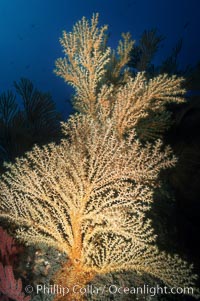
Parasitic zoanthid anemones (yellow) cover dead/dying brown gorgonian. Eagle Rock.
Species: Luminescent parazoanthid, Zoanthid anemone, Muricea fruticosa, Parazoanthus lucificum, Savalia lucifica
Location: Catalina Island, California
Image ID: 05341
Species: Luminescent parazoanthid, Zoanthid anemone, Muricea fruticosa, Parazoanthus lucificum, Savalia lucifica
Location: Catalina Island, California
Image ID: 05341
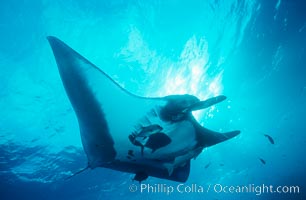
Pacific manta ray with remora.
Species: Giant manta ray, Manta birostris, Remora
Location: San Benedicto Island (Islas Revillagigedos), Baja California, Mexico
Image ID: 06234
Species: Giant manta ray, Manta birostris, Remora
Location: San Benedicto Island (Islas Revillagigedos), Baja California, Mexico
Image ID: 06234
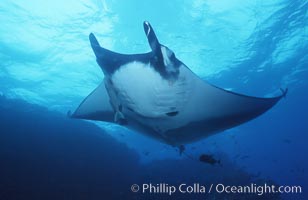
Pacific manta ray with remora, San Benedicto Island, Revilligigedos.
Species: Giant manta ray, Manta birostris, Remora
Image ID: 06242
Species: Giant manta ray, Manta birostris, Remora
Image ID: 06242
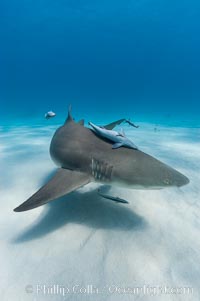
Lemon shark with live sharksuckers.
Species: Lemon shark, Echeneis naucrates, Negaprion brevirostris
Location: Bahamas
Image ID: 10757
Species: Lemon shark, Echeneis naucrates, Negaprion brevirostris
Location: Bahamas
Image ID: 10757
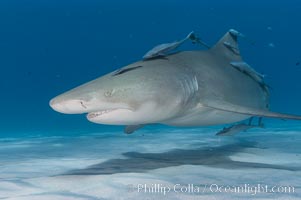
Lemon shark with live sharksuckers.
Species: Lemon shark, Echeneis naucrates, Negaprion brevirostris
Location: Bahamas
Image ID: 10764
Species: Lemon shark, Echeneis naucrates, Negaprion brevirostris
Location: Bahamas
Image ID: 10764
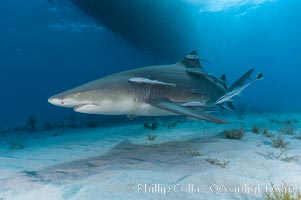
Lemon shark with live sharksuckers.
Species: Lemon shark, Echeneis naucrates, Negaprion brevirostris
Location: Bahamas
Image ID: 10781
Species: Lemon shark, Echeneis naucrates, Negaprion brevirostris
Location: Bahamas
Image ID: 10781
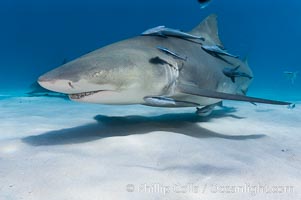
Lemon shark with live sharksuckers.
Species: Lemon shark, Echeneis naucrates, Negaprion brevirostris
Location: Bahamas
Image ID: 10785
Species: Lemon shark, Echeneis naucrates, Negaprion brevirostris
Location: Bahamas
Image ID: 10785
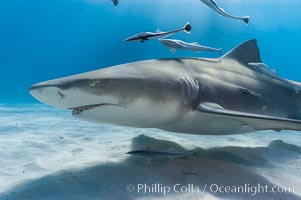
Lemon shark with live sharksuckers.
Species: Lemon shark, Echeneis naucrates, Negaprion brevirostris
Location: Bahamas
Image ID: 10789
Species: Lemon shark, Echeneis naucrates, Negaprion brevirostris
Location: Bahamas
Image ID: 10789
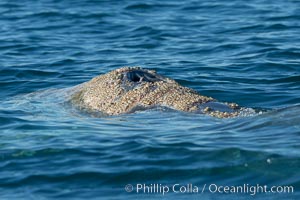
Gray whale dorsal aspect showing blowhole and characteristic skin mottling and ectoparasitic barnacles and whale lice (amphipod crustaceans).
Species: Gray whale, Eschrichtius robustus
Location: San Diego, California
Image ID: 30456
Species: Gray whale, Eschrichtius robustus
Location: San Diego, California
Image ID: 30456
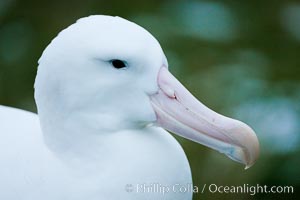
Wandering albatross, on nest and the Prion Island colony. The wandering albatross has the largest wingspan of any living bird, with the wingspan between, up to 12' from wingtip to wingtip. It can soar on the open ocean for hours at a time, riding the updrafts from individual swells, with a glide ratio of 22 units of distance for every unit of drop. The wandering albatross can live up to 23 years. They hunt at night on the open ocean for cephalopods, small fish, and crustaceans. The survival of the species is at risk due to mortality from long-line fishing gear.
Species: Wandering albatross, Diomedea exulans
Location: Prion Island, South Georgia Island
Image ID: 24385
Species: Wandering albatross, Diomedea exulans
Location: Prion Island, South Georgia Island
Image ID: 24385
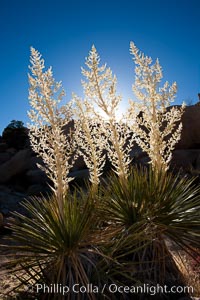
Parry's Nolina, or Giant Nolina, a flowering plant native to southern California and Arizona founds in deserts and mountains to 6200'. It can reach 6' in height with its flowering inflorescence reaching 12'.
Species: Parry's nolina, Nolina parryi
Location: Joshua Tree National Park, California
Image ID: 26754
Species: Parry's nolina, Nolina parryi
Location: Joshua Tree National Park, California
Image ID: 26754
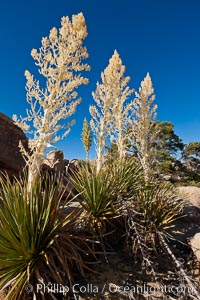
Parry's Nolina, or Giant Nolina, a flowering plant native to southern California and Arizona founds in deserts and mountains to 6200'. It can reach 6' in height with its flowering inflorescence reaching 12'.
Species: Parry's nolina, Nolina parryi
Location: Joshua Tree National Park, California
Image ID: 26758
Species: Parry's nolina, Nolina parryi
Location: Joshua Tree National Park, California
Image ID: 26758
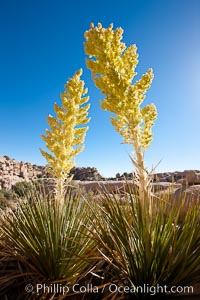
Parry's Nolina, or Giant Nolina, a flowering plant native to southern California and Arizona founds in deserts and mountains to 6200'. It can reach 6' in height with its flowering inflorescence reaching 12'.
Species: Parry's nolina, Nolina parryi
Location: Joshua Tree National Park, California
Image ID: 26759
Species: Parry's nolina, Nolina parryi
Location: Joshua Tree National Park, California
Image ID: 26759
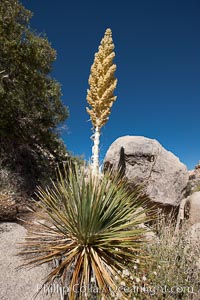
Parry's Nolina, or Giant Nolina, a flowering plant native to southern California and Arizona founds in deserts and mountains to 6200'. It can reach 6' in height with its flowering inflorescence reaching 12'.
Species: Parry's nolina, Nolina parryi
Location: Joshua Tree National Park, California
Image ID: 26760
Species: Parry's nolina, Nolina parryi
Location: Joshua Tree National Park, California
Image ID: 26760
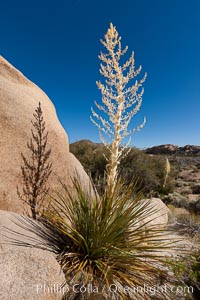
Parry's Nolina, or Giant Nolina, a flowering plant native to southern California and Arizona founds in deserts and mountains to 6200'. It can reach 6' in height with its flowering inflorescence reaching 12'.
Species: Parry's nolina, Nolina parryi
Location: Joshua Tree National Park, California
Image ID: 26768
Species: Parry's nolina, Nolina parryi
Location: Joshua Tree National Park, California
Image ID: 26768

Iceberg and mountain panorama, cloudy morning.
Location: Paradise Bay, Antarctic Peninsula, Antarctica
Image ID: 26311
Panorama dimensions: 3385 x 15334
Location: Paradise Bay, Antarctic Peninsula, Antarctica
Image ID: 26311
Panorama dimensions: 3385 x 15334
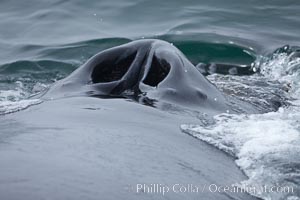
Humpback whale blowhole, showing twin nares (nostrils) which have a few small parasites clinging to the whale's skin around the blowhole openings.
Species: Humpback whale, Megaptera novaeangliae
Location: Santa Rosa Island, California
Image ID: 27041
Species: Humpback whale, Megaptera novaeangliae
Location: Santa Rosa Island, California
Image ID: 27041
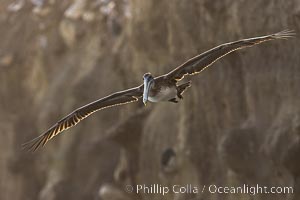
Brown Pelicans Flying Along Sheer Ocean Cliffs, rare westerly winds associated with a storm allow pelicans to glide along La Jolla's cliffs as they approach shelves and outcroppings on which to land. Backlit by rising sun during stormy conditions.
Species: Brown Pelican, Pelecanus occidentalis, Pelecanus occidentalis californicus
Location: La Jolla, California
Image ID: 38878
Species: Brown Pelican, Pelecanus occidentalis, Pelecanus occidentalis californicus
Location: La Jolla, California
Image ID: 38878
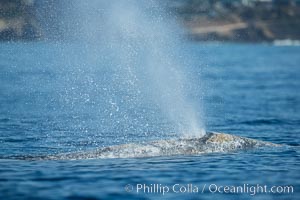
Gray whale dorsal aspect showing blowhole and characteristic skin mottling and ectoparasitic barnacles and whale lice (amphipod crustaceans).
Species: Gray whale, Eschrichtius robustus
Location: San Diego, California
Image ID: 30465
Species: Gray whale, Eschrichtius robustus
Location: San Diego, California
Image ID: 30465
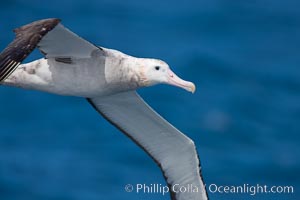
Wandering albatross in flight, over the open sea. The wandering albatross has the largest wingspan of any living bird, with the wingspan between, up to 12' from wingtip to wingtip. It can soar on the open ocean for hours at a time, riding the updrafts from individual swells, with a glide ratio of 22 units of distance for every unit of drop. The wandering albatross can live up to 23 years. They hunt at night on the open ocean for cephalopods, small fish, and crustaceans. The survival of the species is at risk due to mortality from long-line fishing gear.
Species: Wandering albatross, Diomedea exulans
Location: Southern Ocean
Image ID: 24070
Species: Wandering albatross, Diomedea exulans
Location: Southern Ocean
Image ID: 24070
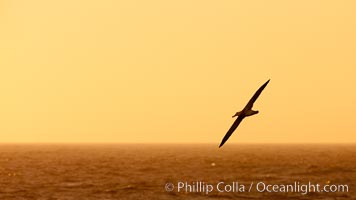
Wandering albatross in flight, over the open sea. The wandering albatross has the largest wingspan of any living bird, with the wingspan between, up to 12' from wingtip to wingtip. It can soar on the open ocean for hours at a time, riding the updrafts from individual swells, with a glide ratio of 22 units of distance for every unit of drop. The wandering albatross can live up to 23 years. They hunt at night on the open ocean for cephalopods, small fish, and crustaceans. The survival of the species is at risk due to mortality from long-line fishing gear.
Species: Wandering albatross, Diomedea exulans
Location: Southern Ocean
Image ID: 24092
Species: Wandering albatross, Diomedea exulans
Location: Southern Ocean
Image ID: 24092
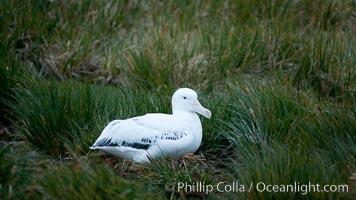
Wandering albatross, on nest in the Prion Island colony. The wandering albatross has the largest wingspan of any living bird, with the wingspan between, up to 12' from wingtip to wingtip. It can soar on the open ocean for hours at a time, riding the updrafts from individual swells, with a glide ratio of 22 units of distance for every unit of drop. The wandering albatross can live up to 23 years. They hunt at night on the open ocean for cephalopods, small fish, and crustaceans. The survival of the species is at risk due to mortality from long-line fishing gear.
Species: Wandering albatross, Diomedea exulans
Location: Prion Island, South Georgia Island
Image ID: 24394
Species: Wandering albatross, Diomedea exulans
Location: Prion Island, South Georgia Island
Image ID: 24394
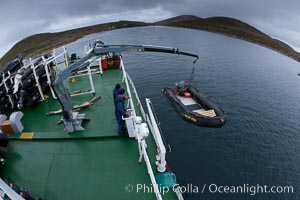
Zodiac boats, are lowered into the ocean from the ship M/V Polar Star in preparation for a day exploring New Island in the Falklands.
Location: New Island, Falkland Islands, United Kingdom
Image ID: 23708
Location: New Island, Falkland Islands, United Kingdom
Image ID: 23708
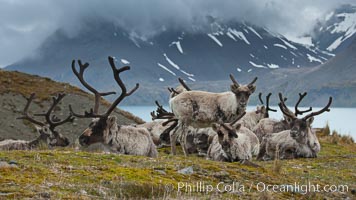
Reindeer on South Georgia Island. Reindeer (known as caribou when wild) were introduced to South Georgia Island by Norway in the early 20th Century. There are now two distinct herds which are permanently separated by glaciers.
Species: Reindeer, Rangifer tarandus
Location: Fortuna Bay, South Georgia Island
Image ID: 24592
Species: Reindeer, Rangifer tarandus
Location: Fortuna Bay, South Georgia Island
Image ID: 24592